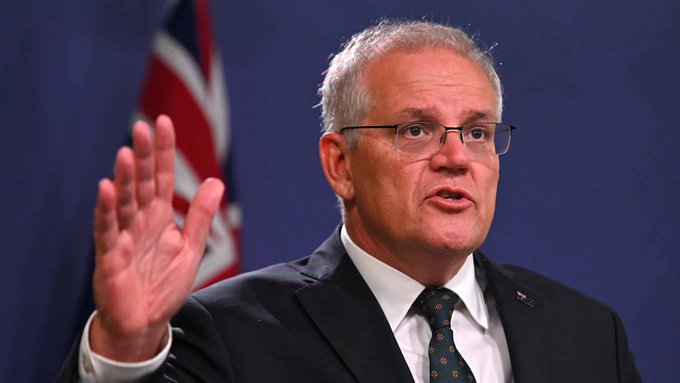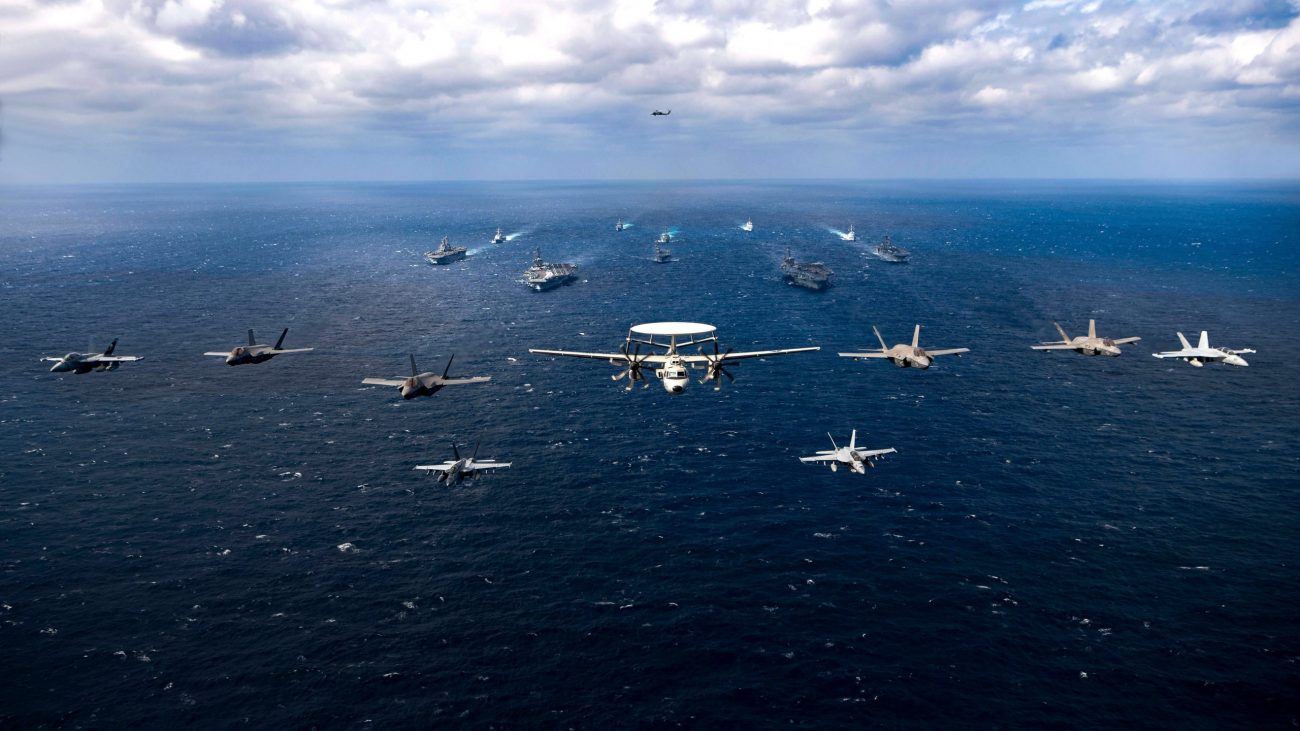The Russian invasion of Ukraine has caused many European countries to boost their defense spending. The ripples of the “Russian aggression” have been felt far beyond Europe. Australia, too, made an ambitious announcement for its defense forces amid the looming threat from China, Russia’s closest ally and a dominant power in the region.
In the face of strategic threats posed by China and Russia, Australia’s military said it is going to increase the number of uniformed personnel to nearly 80,000 by 2040. The proposed $38 billion expansion would increase the strength of the full-time Australian Defense Force to levels not seen since the Vietnam War, ABC News stated.
Prime Minister Scott Morrison and Defense Minister Peter Dutton are to announce a significant expansion at Brisbane’s Gallipoli Barracks, bringing the total number of Defense staff, including civilians, to more than 101,000.

The additional 18,500 uniformed soldiers, according to the government, are 6,000 more than the “critical minimum” recommended by the military to guarantee “redundancy and resilience,” or the ability to cover casualties from armed conflict.
It claims that the personnel numbers are in line with the 2020 Force Structure Plan (FSP) and that extensive preparation has been underway since the strategy was authorized by the cabinet’s National Security Committee last November.
Australia’s Defense and Foreign Affairs Committee report published in November last year had called for an urgent assessment of the country’s military, questioning the ADF’s existing ability to keep the country secure.
However, the ambitious expansion was quickly dismissed by China as an unprofitable venture aimed at encouraging US deployment closer to China.
According to Chinese experts, Australia’s recent move, along with a proposal revealed three days ago to establish a new base for its future nuclear-powered submarines, is clearly a loss-making business, as it is investing money solely to bring a US-led military deployment facility closer to China, state-run Global Times said.

Chinese experts stated that Australia’s current measures show that it is committed to being an accomplice to the United States’ global hegemony and meddling in regional matters, and to adopt the so-called Indo-Pacific strategy to contain China.
Australia sees China as a primary threat in the Pacific waters as well as in the larger Indo-Pacific region. It is one of the staunchest supporters of the Indo-Pacific policy and is part of initiatives like QUAD and AUKUS, that China claims is aimed at its containment.
What Does The Expansion Look Like?
New military capabilities, such as nuclear-powered submarines, Hunter-class frigates, and upgraded long-range and defense missile systems, will require more soldiers, sailors, and aviators, according to ABC News.
Prime Minister Morrison recently announced plans for a nuclear submarine facility on the east coast of the country. The A$10 billion (US$7.4 billion) base will support Australia’s future nuclear-powered submarine fleet, which will most likely be acquired under the AUKUS agreement, as previously reported by the EurAsian Times.

In September last year, Australia inked a nuclear submarine technology exchange deal with the United States and the United Kingdom as part of the AUKUS pact aimed at countering China.
The ADF’s current proposed expansion of troops will also focus on emerging battlefront sectors such as space, information, and cyber warfare.
By 2024, the ADF will have gained 800 more uniformed troops, 250 public servants, and an undefined number of Australian Signals Directorate (ASD) staff.
The Navy will require the highest manpower increase of the three services in the coming years to accommodate the rise in surface warships and future nuclear-powered submarines. The number of submarines has to increase to at least 2,300 from 900.
Morrison has chosen national security as a key plank for his re-election campaign, stating that the “top priority of my government is to keep Australians safe,” notwithstanding the ongoing conflict in Ukraine and rising tensions with China.
The extra spending was “absolutely necessary”, according to Defense Minister Peter Dutton, who highlighted the ongoing war in Europe and the Indo-Pacific area as reasons for the big decision, Sky News reported.
“If people think that the ambitions within the Indo-Pacific are restricted just to Taiwan and there won’t be knock-on impacts, if we don’t provide a deterrent effect and work closely with our colleagues and with our allies, then they don’t understand the lessons of history.”
Dutton further claimed that increasing military capability will make Australia a “more credible partner” with the UK, US, NATO, Japan, and India, among other allies.

“If we are to rely on them, they need to rely on us and we have the best-trained men and women in the world filling the ranks of the Australian Defense Force and today the supplement of 18,500 extra will talk to the capacity that we need in the future and it will build on the incredible skill set that we have at the moment,” he added.
These comments from the Australian Defense Minister assume significance as they aim to draw a parallel between the Russian invasion of Ukraine with a potential invasion of Taiwan by China. Australia has joined hands with its allies and partners in NATO to provide aid to war-ravaged Ukraine. On March 1, it pledged $70 million dollars in military aid as well as non-military support and medical supplies.
China Hits Back
Naturally, Australia’s military expansion plan has not gone down well with Beijing, which often terms Canberra’s perception of “China threat” as an attempt to malign and contain the latter.
“Certain Australian senior officials have been making derogatory comments about China, pushing the so-called China threat and confrontation with China in the South China Sea out of their own personal interests, said Tan Kefei, a spokesperson for China’s Ministry of National Defense.
“We urge Australia’s senior military and political authorities to quit exaggerating the ‘China threat’ and instead work to strengthen mutual trust between the two countries, rather than continuing down the wrong path,” Tan added.
Since Australia lacks the capability to design and manufacture submarines, the nuclear-powered submarine force it aspired to build would effectively be a US squadron, with the US controlling not only technology but also command, Song Zhongping, a Chinese military commentator, told the Global Times.
Once completed, Australia’s nuclear-powered submarine station will allow American and British nuclear-powered submarines to visit the West Pacific and the South China Sea more frequently, posing a more direct danger to China, according to Song.

However, because the site would be within range of China’s missiles, Song believes that the base’s survivability is also in doubt. Last year, in an editorial, then editor-in-chief of Global Times, Hu Xijin warned that China would retaliate with long strike missiles if Australia got involved with a potential military conflict with Taiwan.
The hostility between Australia and China has been on a rise in the past couple of years. Recently, Australia accused a Chinese warship of shining lasers on its surveillance aircraft which was rejected by Beijing as malicious disinformation.

Australia considers China’s march and increasing influence in Pacific and Pacific Island Countries (PICs) as detrimental to its strategic interests. The US has also expressed concern that Chinese missiles like the DF-26 could put US assets in Australia and Guam in jeopardy and has vowed to strengthen its own defenses.
- Contact the author at sakshi.tiwari9555@gmail.com
- Follow EurAsian Times on Google News




